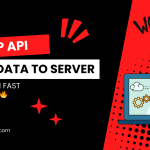The Best Fluffy Pancakes recipe you will fall in love with. Full of tips and tricks to help you make the best pancakes.
The Rise of Edge Computing in IoT
Internet of Things (IoT) devices generate vast amounts of data every second, leading to the need for efficient data processing and analysis. Traditional cloud computing models may face challenges in handling this massive influx of data in real-time due to latency issues and bandwidth constraints. This is where edge computing steps in to transform the IoT landscape.
What is Edge Computing?
Edge computing involves processing data near the source or ‘edge’ of the network, closer to where it is generated, rather than relying on a centralized data processing system like the cloud. By bringing computation and data storage closer to IoT devices, edge computing minimizes the need to send data back and forth to a distant data center, reducing latency and improving overall system efficiency.
Enhancing Real-Time Data Processing
One of the key advantages of edge computing in IoT is its ability to enhance real-time data processing. With edge computing infrastructure deployed closer to IoT devices, data can be processed and analyzed locally, enabling quick decision-making based on real-time insights. This is particularly crucial in applications where immediate action is required, such as industrial automation, autonomous vehicles, and healthcare monitoring.
Optimizing Bandwidth Usage
Edge computing helps in optimizing bandwidth usage by reducing the volume of data that needs to be transmitted to the cloud for processing. By filtering and processing data at the edge, only relevant information is sent to the central cloud servers, thereby conserving bandwidth and reducing network congestion. This not only improves the overall efficiency of IoT systems but also lowers operational costs related to data transmission.
Ensuring Data Privacy and Security
Another significant benefit of edge computing in IoT is its role in enhancing data privacy and security. By processing sensitive data locally at the edge, organizations can minimize the risk of data breaches during transit to the cloud. This localized approach to data processing adds an extra layer of security, ensuring that critical information remains secure within the edge infrastructure.
Conclusion
Edge computing is transforming the IoT landscape by enabling faster data processing, real-time analysis, and improved system efficiency. By bringing computation closer to IoT devices, edge computing enhances the overall performance and responsiveness of IoT applications, making them more agile and responsive to changing environments. As the adoption of IoT continues to grow, the integration of edge computing will play a pivotal role in shaping the future of connected devices and services.




